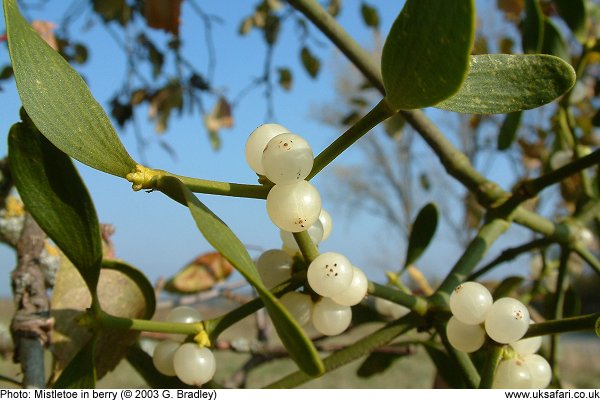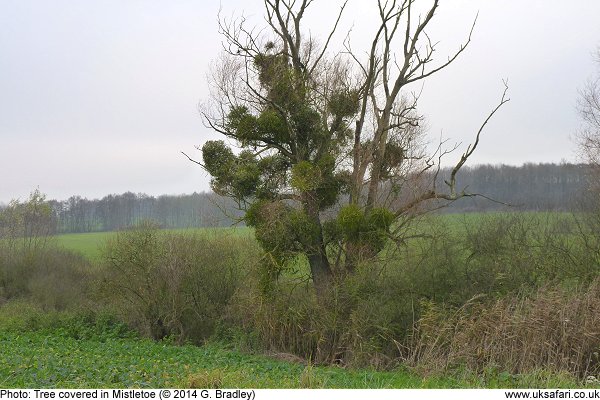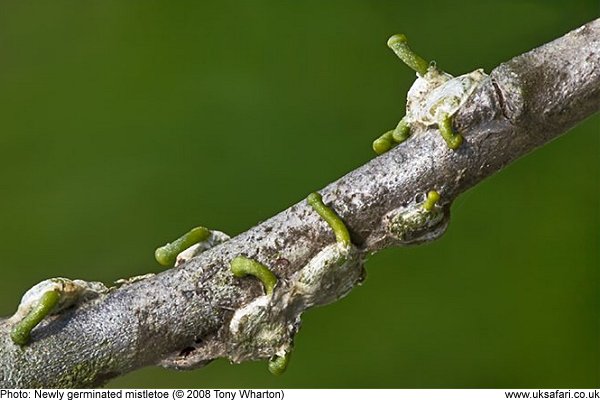 Quick Facts
Quick Facts
Scientific name: Viscum album
Size: Stems grow up to 90cm long
Distribution: Common in the south and the midlands of England
Flowering Months: September to January
Habitat: Grows on hawthorn, apple, lime and maple trees
Special features: Mistletoe is a semi-parasitic plant which grows on the branches of host trees. Some of the plants nutrients come from the host, and the remainder comes from chlorophyll, generated by the plant itself.
The plant spreads to surrounding trees by producing seeds inside creamy coloured berries which are eaten and dispersed by birds.
The name mistletoe is thought to come from one of the birds which feeds on the berries - the Mistle Thrush. The latin name 'Viscum album' relates to the berries which contain a sticky, or viscous fluid (Viscum) and are white in colour (album).
In Roman times, mistletoe was believed to protect against lightening, poisoning and evil influences. It was also thought to increase fertility. This may be the source of the tradition of kissing beneath a sprig of mistletoe at Christmas, which continues today.
In some counties the mistletoe was burned after twelfth night in case those who kissed beneath it did not marry.
 Related Pages
Related Pages

 Popular Pages
Popular Pages
Amphibians, Bats, Badgers, Beetles, Birds, Birds of Prey, Bumble Bees, Butterflies, Caterpillars, Creepy-Crawlies, Deadly Spiders, Dolphins, Dragonflies, E-Postcards, False Widow Spiders, Free Newsletter, Frogs, Fungi, Garden Spiders, Glow-Worms, Grey Squirrels, Hedgehogs, House Spiders, Ladybirds, Mammals, Marine Mammals, Moths, Owls, Reptiles, Spiders, Toads, Trees, Wildlife Hospitals
© Copyright 2017 G. Bradley - UK Safari | About Us | Links | Contributors


 Mistletoe
Mistletoe




